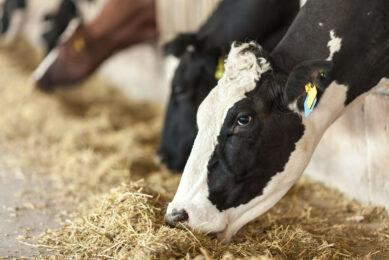Research: Ruminal acidosis in feedlot cattle (a review)
Researchers from the University of Manitoba in Winnipeg, Canada and the Lethbridge Research centre in Canada cooperated with the Autonomous University of Barcelona in Spain to review the interplay between feed ingredients, rumen function and feeding behaviour in the occurrence of ruminal acidosis in feedlot cattle.
Ruminal acidosis in feedlot cattle is a common metabolic disorder of digestive origin with significant economic and welfare implications.
The main risk factors are high grain, low roughage diets because of their high rate and extent of degradation by rumen microbes.
Diet formulation should therefore consider the proportion, method of processing and type of grain; the proportion, fibre concentration and particle size of forages; and the use of feed additives.
Grain and forage characteristics, and feed additives, may determine the rate and amount of organic acids produced in the rumen.
In addition, diet formulation may also affect feeding behaviour, i.e. feed intake and chewing behaviours, which has a great influence on ruminal fluid acid–base balance.
Feeding characteristics associated with low ruminal fluid pH are:
- high dry matter intake and ingestion of large meals because of the greater amount of acid production per period of time,
- high eating rate because of lower feed ensalivation,
- short time spent chewing while eating and ruminating because of lower daily saliva production, and
- large variations in feeding behaviour patterns throughout the day such as less frequent meals and rumination.
The ruminal acid–base balance requires synchronization in time between acid production and neutralization through saliva, as well as elimination through absorption, wash-out from the rumen, and metabolization.
Greater proportions of roughage in the diet and greater particle size leads to slower eating rate and longer chewing time which favours saliva production, and smaller meals which reduce the amount of acid production.
Adaptation of feeding behaviour to diets with greater proportion of concentrates also plays an important role, as smaller meals and more even distribution of intake throughout the day lead to a better synchronization in time between acid production and elimination or neutralization.
Monensin vs sodium bicarbonate
Monensin increases the frequency of meals and reduces meal size which is beneficial for ruminal fluid pH, whereas sodium bicarbonate at high concentrations produces the opposite effects and reduces rumination.
In addition to diet formulation, feeding management and the social environment may also affect feeding behaviour and consequently, ruminal fluid pH.
Delivering the feed twice daily results in better synchronization in time between feed intake (acid production), rumination (saliva production), and elimination of fermentation products from the rumen.
In contrast, feeding programs that restrict feed amount and time available allow animals to become hungry, whereas restricted feeding space increases competition among group mates.
Both situations lead to fewer and larger meals eaten at a faster rate, and consequently, greater risk of ruminal acidosis.











